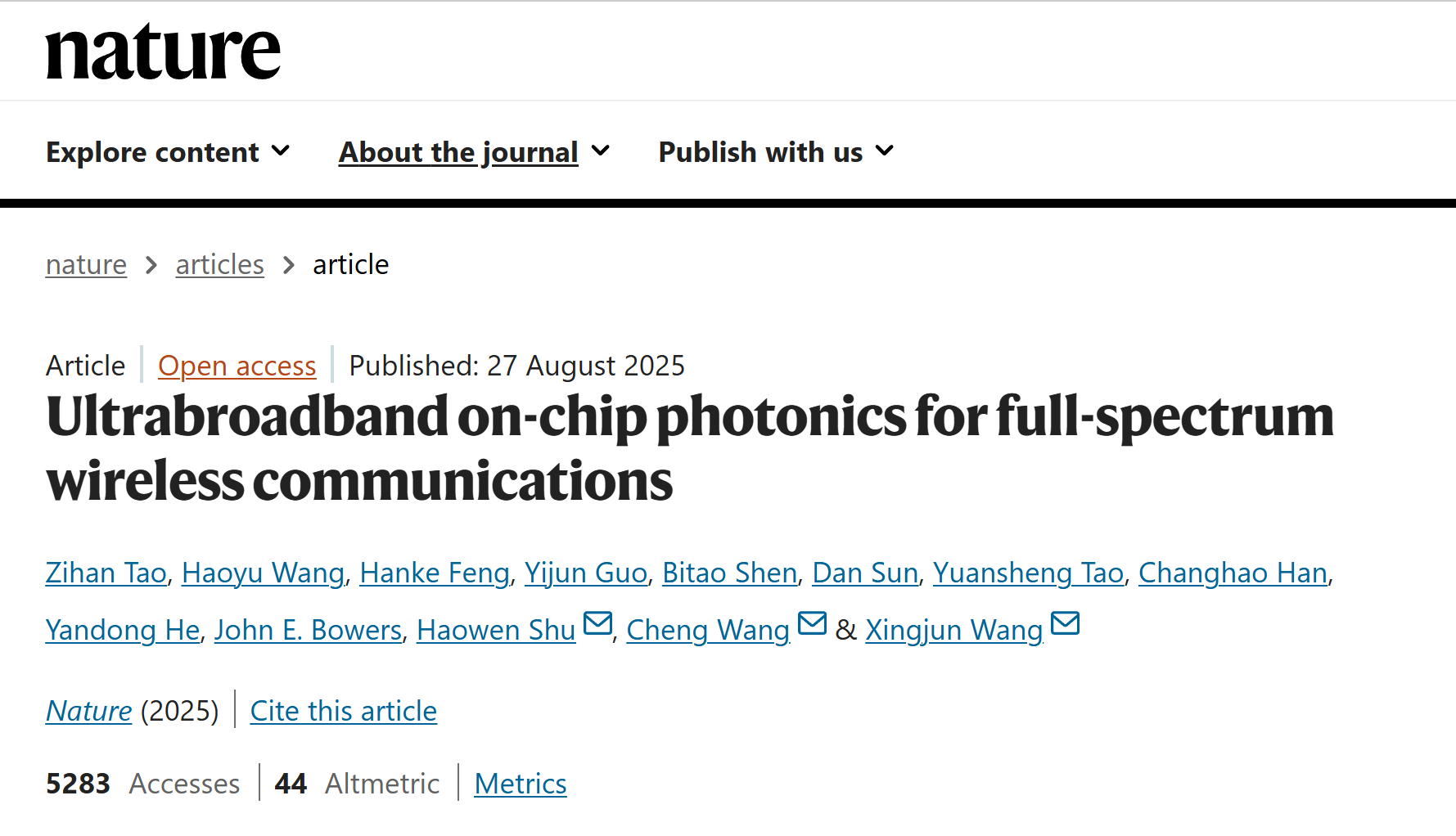About Us

RhinoptiX Technology Ltd. is a global leader in photonic integrated circuits (PICs), dedicated to delivering higher bandwidth, lower energy consumption and cost-effective integrated photonics engines. Founded by a team of Ph.D. experts from Harvard University and City University of Hong Kong, the company leverages its groundbreaking innovations and global leadership in thin-film lithium niobate (TFLN) photonics to provide system-on-chip (SoC) photonic engine solutions, empowering next-generation AI data center interconnects, 6G wireless networks, autonomous driving, eVTOL aircrafts, and quantum technologies.
-

2025
The first demonstration of the full-spectrum 6G wireless communication chip was achieved. This work was published in Nature with Professor FENG Hanke as the co-first author and Professor WANG Cheng as the corresponding author.
-
2025
The first demonstration of a delay-line-based thin-film lithium niobate single-sideband modulator was achieved. This work was published in Optica as an Editor's Pick, with Dr. CHEN Yikun as the first author and Professor WANG Cheng as the corresponding author.
-

2025
Our latest work on "Integrated lithium niobate microwave photonic processing engine" is awarded China's Top 10 Advances in Optics (Applied Research)!
-

2025
Winning Gold Award at the 4th Asia Exhibition of Innovations & Inventions Hong Kong (AEII).
-

2025
On January 9th, Rhinopix Technology Ltd. was founded.
-

-

2024
Dr. ZHANG Ke participated in the 2024 Maker in China SME Innovation and Entrepreneurship Global Finals as the representative of Hong Kong and won the first runner-up prize.
-

2024
Dr. ZHANG Ke represented the founding team to participate in Qianhai-Guangzhou-Hong Kong-Macao-Taiwan Youth Innovation and Entrepreneurship Competition, and won the Champion of Hong Kong Chapter.
-

2024
Dr. ZHANG Ke represented the founding team to participate in the 2024 Maker in China SME Innovation and Entrepreneurship Global Contest, and won the Champion of Hong Kong Chapter.
-

2024
The first demonstration of the integrated thin-film lithium niobate microwave photonic processing engine chip was achieved. This work was published in Nature with Professor FENG Hanke as the first author and Professor WANG Cheng as the corresponding author.
-
2024
The first implementation of electro-optic frequency comb spectrum engineering in thin-film lithium niobate photonic crystal resonators was achieved. This work was published in Advanced Materials as a Cover Feature, with Dr. ZHANG Ke as the first author and Professor WANG Cheng as the corresponding author.
-

2022
The wafer-scale processing of thin-film lithium niobate chips was achieved. This work was published at IEEE TENCON, 2022.
-

2022
The millimeter-wave band modulator was demonstrated, achieving an electro-optic bandwidth of up to 300 GHz. This work was published in Photonics Research with Professor WANG Cheng as the corresponding author.
-

2021
The first demonstration of an erbium-doped thin-film lithium niobate waveguide amplifier was achieved. This work was published in Optics Letters, selected as an Editor's Pick and Highly Cited Article, with Dr. CHEN Zhaoxi as the first author and Professor WANG Cheng as the corresponding author.
-

-

-

2019
The first demonstration of electro-optic frequency comb generation in thin-film lithium niobate resonators was achieved. The work was published in Nature with Professor WANG Cheng as a co-first author.
-
2019
The first demonstration of harmonic Kerr frequency comb generation in thin-film lithium niobate was achieved. The work was published in Nature communications with Professor WANG Cheng as the first author.
-

2018
The first demonstration of a CMOS-compatible thin-film lithium niobate modulator with bandwidth up to 100 GHz was achieved, which was published in Nature with Professor WANG Cheng as the first author.
-
2017
The pioneering dry etching process was developed, initiating the field of thin-film lithium niobate integrated photonics. This achievement was published in Optica with Professor WANG Cheng as a co-first author.